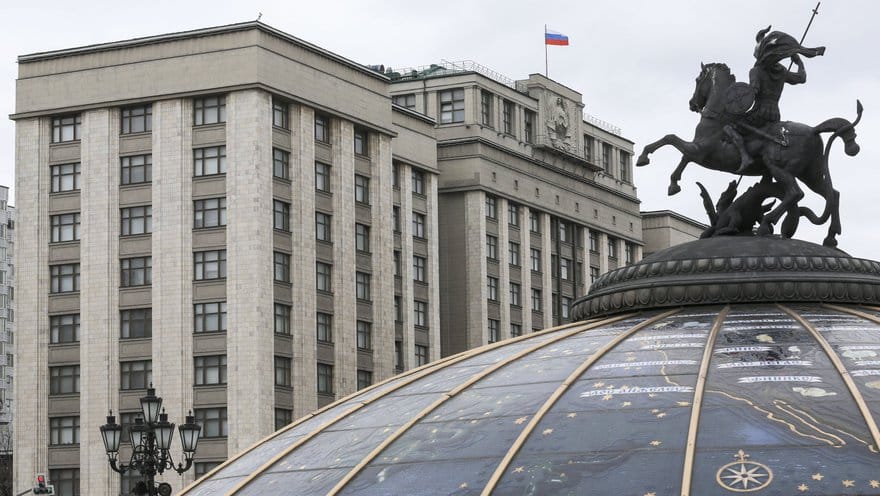Russia Charges Ahead with Digital Ruble: CBDC Law Passed as Launch Nears
Moscow just flipped the switch on the next phase of monetary evolution. The Duma's rubber-stamp approval of the digital ruble framework signals a full-speed sprint toward CBDC deployment—no brakes, no apologies.
Why this matters now
While Western central banks tiptoe through regulatory tulips, Russia's bulldozing through the red tape. The bill greenlights real-world testing with actual citizens before 2025 closes out—putting them months, if not years, ahead of Eurozone counterparts still stuck in 'feasibility study' purgatory.
The fine print they're not shouting about
Transaction fees will undercut commercial banks (naturally). Mandatory wallet access for all citizens (of course). And that cozy new feature letting the Kremlin freeze assets with keystrokes (what could go wrong?).
One cynical observation before we go: Nothing accelerates financial innovation quite like international sanctions and a collapsing fiat currency. The digital ruble isn't just coming—it's arriving right on schedule.
Digital Ruble Bill Passes Duma
Lawmakers voted in favor of the bill in its second and third readings. The bill will now pass to the Russian upper house, the Federation Council, for approval.

The bill will then pass on to President Vladimir Putin, who will officially sign the bill into law. These two steps are mere formalities, however, with the law slated to come into force on September 1, 2026.
This is the Central Bank’s new date for a nationwide rollout, following its last-gasp decision to postpone its summer 2025 CBDC launch plans.
The law was spearheaded by a group of lawmakers and senators. The group was headed by Anatoly Aksakov, the Chairman of the State Duma Committee on Financial Markets.
Aksakov is the chief architect of all of Russia’s crypto and CBDC legislation passed to date.
The draft law effectively enshrines the Central Bank’s CBDC timeline for banks and other financial providers into law.
From September 1, 2026, all firms with an annual revenue of 120 million rubles ($1.5 million) or above must provide their customers with access to digital ruble services.
Medium-sized firms (those with revenues of up to 30 million rubles or $383,000) will have an extra year to comply.
Smaller firms and financial industry startups, meanwhile, will have to comply by September 1, 2028.
The rules will also apply to foreign banks and firms that have branches in Russia. Several Chinese banks and a handful of European and American banks continue to operate in Russia.
NATO Secretary General Mark Rutte warned that Brazil, China and India will face secondary sanctions from the US if Russia doesn’t negotiate a peace deal with Ukraine https://t.co/fhhSFOOlin
— Bloomberg (@business) July 15, 2025QR Code Clauses
The bill also mandates the use of digital ruble QR codes in payments for goods and services.
The law will allow individuals to pay companies or individual traders CBDC tokens for goods and services using app-based QR codes.
Many vendors will also be obliged to allow their customers to pay in digital RUB if requested. This, too, will involve a gradual rollout.
Bigger companies will be obliged to provide CBDC payment options from the outset. But some smaller firms will be allowed to opt out of the system altogether.
The bill also addresses lingering questions about the feasibility of rolling out the digital ruble in parts of the country that have poor mobile network coverage and internet access.
In many rural areas, coverage remains spotty. While China’s digital yuan pilot has seen the People’s Bank of China and its partners resolve such problems with hard or offline CBDC wallets, the Russian Central Bank is yet to reveal details of any such trial.
As such, the bill dictates that vendors without internet access or mobile network coverage will not be obliged to accept digital ruble payments.
Vendors with annual revenue under 5 million rubles ($63,900) per year will also be exempted.
China said that there are no winners in a trade war after US President TRUMP threatened to hit buyers of Russian exports with sanctions unless Russia agrees to a peace deal in 50 days. Read more: https://t.co/7l9w9E5p2s pic.twitter.com/revUGWtkrx
— Reuters Business (@ReutersBiz) July 15, 2025Pilot Still Underway
The Central Bank began piloting the digital RUB in mid-2023. In its first stage, 600 citizens and 22 firms from 11 cities began using the CBDC.
These companies ranged from major banks to small beauty salons. The Moscow Metro has also begun trialing CBDC payments.
However, commercial banks have repeatedly questioned the need for a Russian CBDC. The latest challenge has come from German Gref, the head of the megabank Sberbank.
Earlier this month, Gref said he could not see how the digital ruble could lead to a large-scale transformation of the Russian economy. CNews quoted Gref as saying:
“I don’t understand why an individual needs the option to use a CBDC. And neither do banks. And businesses, too. I still don’t really understand why this is necessary.”
However, Gref did suggest that there was a “possible future” for the digital ruble in cross-border settlements, provided overseas trading partners wanted to use it.
The Central Bank claims that the CBDC will allow citizens and companies to make faster, more transparent, and more secure transactions.
The Ministry of Finance, meanwhile, says it wants to use the CBDC to issue benefits and pay government contracts. It claims that this will help eliminate benefits fraud and corruption.

